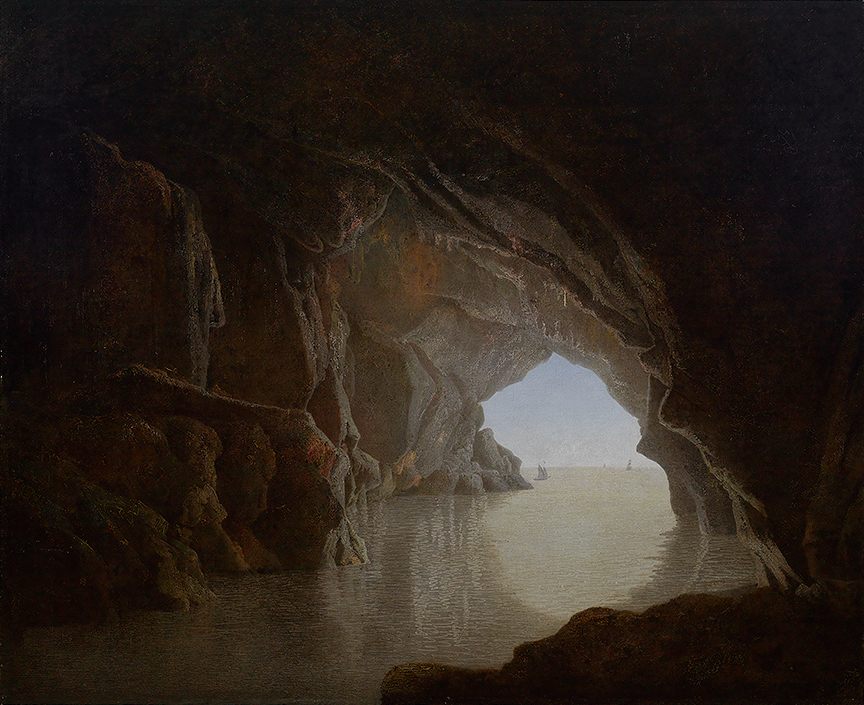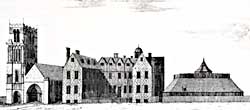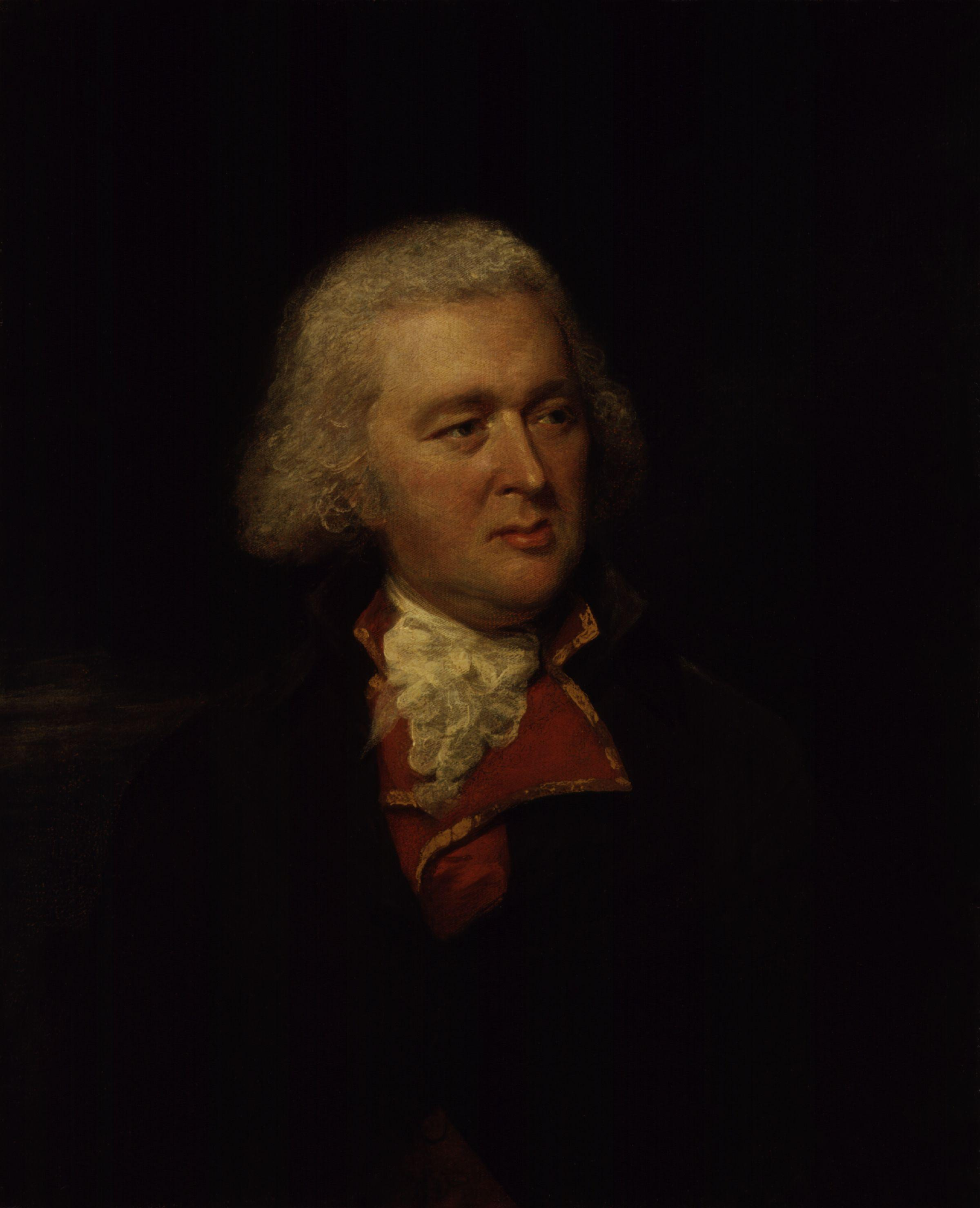|
Miravan Breaking Open The Tomb Of His Ancestors
''Miravan Breaking Open the Tomb of his Ancestors'' is a painting by Joseph Wright of Derby originally completed in 1772 . Description The painting was titled ''Miravan Breaking Open the Tomb of his Ancestors'' and it shows a Persian nobleman, Miravan, who has discovered one of his ancestor's tombs. Driven by greed he orders that the tomb be broken open after he sees that the tomb's inscription claims that a "greater treasure than Croesus ever possessed" is within. The painting shows the revulsion of Miravan and his anguish when he realises that he has been tricked. His ancestor says that Miravan will not enjoy eternal repose as he has disturbed one of his progenitors. The story of Miravan as explained by Joseph Wright comes from John Gilbert Cooper's ''Letters Concerning Taste'' which was published in 1755. Though Cooper claims that the story is Persian, no original source is known. Joseph Wright was known for his studies under unusual lighting; this painting combines this cha ... [...More Info...] [...Related Items...] OR: [Wikipedia] [Google] [Baidu] |
Joseph Wright Of Derby
Joseph Wright (3 September 1734 – 29 August 1797), styled Joseph Wright of Derby, was an English landscape and portrait painter. He has been acclaimed as "the first professional painter to express the spirit of the Industrial Revolution". Wright is notable for his use of tenebrism, an exaggerated form of the better known chiaroscuro effect, which emphasizes the contrast of light and dark, and for his paintings of candle-lit subjects. His paintings of the birth of science out of alchemy, often based on the meetings of the Lunar Society of Birmingham, a group of scientists and industrialists living in the English Midlands, are a significant record of the struggle of science against religious values in the period known as the Age of Enlightenment. Many of Wright's paintings and drawings are owned by Derby City Council, and are on display at the Derby Museum and Art Gallery. Life Joseph Wright was born in Irongate, Derby, to a respectable family of lawyers. He was the third ... [...More Info...] [...Related Items...] OR: [Wikipedia] [Google] [Baidu] |
Derby
Derby ( ) is a city and unitary authority area in Derbyshire, England. It lies on the banks of the River Derwent in the south of Derbyshire, which is in the East Midlands Region. It was traditionally the county town of Derbyshire. Derby gained city status in 1977, the population size has increased by 5.1%, from around 248,800 in 2011 to 261,400 in 2021. Derby was settled by Romans, who established the town of Derventio, later captured by the Anglo-Saxons, and later still by the Vikings, who made their town of one of the Five Boroughs of the Danelaw. Initially a market town, Derby grew rapidly in the industrial era. Home to Lombe's Mill, an early British factory, Derby has a claim to be one of the birthplaces of the Industrial Revolution. It contains the southern part of the Derwent Valley Mills World Heritage Site. With the arrival of the railways in the 19th century, Derby became a centre of the British rail industry. Derby is a centre for advanced transport manufactur ... [...More Info...] [...Related Items...] OR: [Wikipedia] [Google] [Baidu] |
Derby Museum And Art Gallery
Derby Museum and Art Gallery is a museum and art gallery in Derby, England. It was established in 1879, along with Derby Central Library, in a new building designed by Richard Knill Freeman and given to Derby by Michael Thomas Bass. The collection includes a gallery displaying many paintings by Joseph Wright of Derby; there is also a large display of Royal Crown Derby and other porcelain from Derby and the surrounding area. Further displays include archaeology, natural history, geology, military collections and world cultures. The Art Gallery was opened in 1882. History The museum can trace its start to the formation of the Derby Town and County Museum and Natural History Society on 10 February 1836. The society was housed by Full Street Public Baths but it was a private society funded by its members' subscriptions. Its collections were created by donations initially from Dr Forrester who had been a President of Derby Philosophical Society. The patron of the Museum Society was ... [...More Info...] [...Related Items...] OR: [Wikipedia] [Google] [Baidu] |
Croesus
Croesus ( ; Lydian: ; Phrygian: ; grc, Κροισος, Kroisos; Latin: ; reigned: c. 585 – c. 546 BC) was the king of Lydia, who reigned from 585 BC until his defeat by the Persian king Cyrus the Great in 547 or 546 BC. Croesus was renowned for his wealth; Herodotus and Pausanias noted that his gifts were preserved at Delphi. The fall of Croesus had a profound effect on the Greeks, providing a fixed point in their calendar. "By the fifth century at least," J. A. S. Evans has remarked, "Croesus had become a figure of myth, who stood outside the conventional restraints of chronology." Name The name of Croesus was not attested in contemporary inscriptions in the Lydian language. In 2019, D. Sasseville and K. Euler published a research of Lydian coins apparently minted during his rule, where the name of the ruler was rendered as ''Qλdãns''. The name comes from the Latin transliteration of the Greek , which was itself the ancient Hellenic adaptation of the Lydian n ... [...More Info...] [...Related Items...] OR: [Wikipedia] [Google] [Baidu] |
John Gilbert Cooper
John Gilbert Cooper or John Gilbert (24 August 1722 – 21 April 1769) was a British poet and writer. Biography John Gilbert was born in Lockington, Leicestershire. His father was left a legacy which included Thurgarton Priory which he was allowed if he changed his name to Cooper. John Gilbert Cooper was educated locally and then at Westminster School.Robin Dix, ‘Cooper, John Gilbert (1722–1769)’, Oxford Dictionary of National Biography, Oxford University Press, 2004; online edn, 200accessed 28 May 2011/ref> He completed his education at Trinity College, Cambridge. Cooper first published poetry in 1742 occasionally until he became a regular contributor to ''The Museum'' which was published by Robert Dodsley. His contributions to Dodsley's journal was under the nom de plume of ''Philaretes''.John Gilbert Coop ... [...More Info...] [...Related Items...] OR: [Wikipedia] [Google] [Baidu] |
A Philosopher By Lamplight
''A Philosopher by lamplight'' (also known as ''A Hermit Studying Anatomy'') is a painting by Joseph Wright of Derby. It is not known when Wright painted the picture, but it was first exhibited in 1769 in London with the Society of Artists. This was one of the earliest of many lamplight or candlelight paintings and portraits for which Wright is famed. Description This picture was described in the catalogue of the 1801 sale as a companion to ''The Alchemist Discovering Phosphorus''. Each has a main figure in the foreground with two subsidiary ones behind, both are night scenes and show old men engaged in scientific research. The painting shows an old man who is thought to be a philosopher or a pilgrim, examining a collection of human bones in a lamp-lit cave. Two smaller men, or boys, dressed as pilgrims (as identified by the scallop shells in their hats: the emblem of St James) seem to be approaching him. The size of these figures is a lot smaller than the main character in ... [...More Info...] [...Related Items...] OR: [Wikipedia] [Google] [Baidu] |
Democritus
Democritus (; el, Δημόκριτος, ''Dēmókritos'', meaning "chosen of the people"; – ) was an Ancient Greek pre-Socratic philosopher from Abdera, primarily remembered today for his formulation of an atomic theory of the universe. None of his work has survived. Life Although many anecdotes about Democritus' life survive, their authenticity cannot be verified and modern scholars doubt their accuracy. Democritus was said to be born in the city of Abdera in Thrace, an Ionian colony of Teos,. Ancient accounts of his life have claimed that he lived to a very old age, with some writers claiming that he was over a hundred years old at the time of his death. Philosophy and science states that the relation between Democritus and his predecessor Leucippus is not clear; while earlier ancient sources such as Aristotle and Theophrastus credit Leucippus with the invention of atomism and credit its doctrines to both philosophers, later sources only credit Democritus, making defi ... [...More Info...] [...Related Items...] OR: [Wikipedia] [Google] [Baidu] |
Valentine Green
Valentine Green (3 October 173929 July 1813) was a British mezzotinter and print publisher. Green trained under Robert Hancock, a Worcester engraver, after which he moved to London and began working as a mezzotint engraver. He began to exhibit with the Incorporated Society of Artists from 1766, became a fellow a year later and a director in 1771. He was appointed mezzotint engraver to the King in 1773, and the following year was elected an associate engraver with the Royal Academy. Throughout the 1770s and 1780s, Green's engraving practice flourished. In the 1790s, however, several of his international speculations failed and in 1798 he was declared bankrupt. In 1805, he accepted the role of keeper of the British Institution, a post he held until his death. Biography Born in Salford Priors, he was placed by his father in a solicitor's office at Evesham, where he remained for two years; but ultimately he decided, on his own responsibility, to abandon the legal profession and b ... [...More Info...] [...Related Items...] OR: [Wikipedia] [Google] [Baidu] |
Mezzotint
Mezzotint is a monochrome printmaking process of the '' intaglio'' family. It was the first printing process that yielded half-tones without using line- or dot-based techniques like hatching, cross-hatching or stipple. Mezzotint achieves tonality by roughening a metal plate with thousands of little dots made by a metal tool with small teeth, called a "rocker". In printing, the tiny pits in the plate retain the ink when the face of the plate is wiped clean. This technique can achieve a high level of quality and richness in the print. ''Mezzotint'' is often combined with other ''intaglio'' techniques, usually etching and engraving. The process was especially widely used in England from the eighteenth century, to reproduce portraits and other paintings. It was somewhat in competition with the other main tonal technique of the day, aquatint. Since the mid-nineteenth century it has been relatively little used, as lithography and other techniques produced comparable results more easil ... [...More Info...] [...Related Items...] OR: [Wikipedia] [Google] [Baidu] |
Paintings By Joseph Wright Of Derby
Painting is the practice of applying paint, pigment, color or other medium to a solid surface (called the "matrix" or "support"). The medium is commonly applied to the base with a brush, but other implements, such as knives, sponges, and airbrushes, can be used. In art, the term ''painting ''describes both the act and the result of the action (the final work is called "a painting"). The support for paintings includes such surfaces as walls, paper, canvas, wood, glass, lacquer, pottery, leaf, copper and concrete, and the painting may incorporate multiple other materials, including sand, clay, paper, plaster, gold leaf, and even whole objects. Painting is an important form in the visual arts, bringing in elements such as drawing, composition, gesture (as in gestural painting), narration (as in narrative art), and abstraction (as in abstract art). Paintings can be naturalistic and representational (as in still life and landscape painting), photographic, abstract, nar ... [...More Info...] [...Related Items...] OR: [Wikipedia] [Google] [Baidu] |








